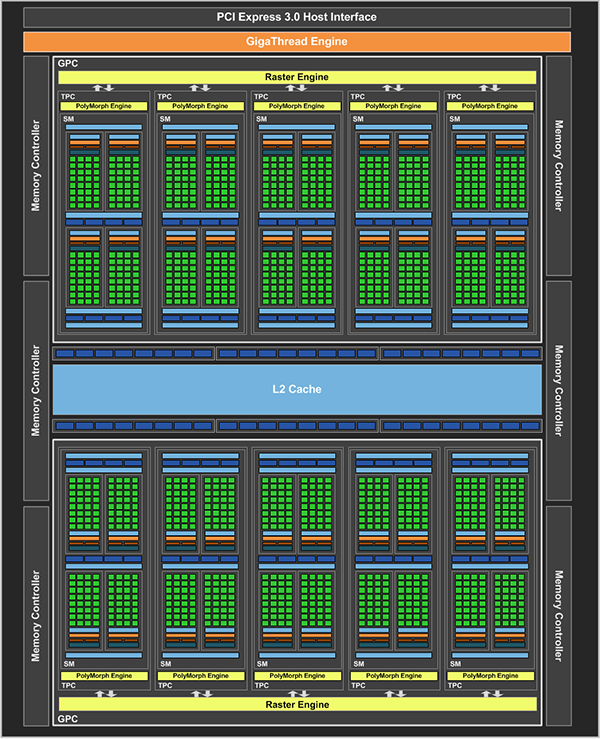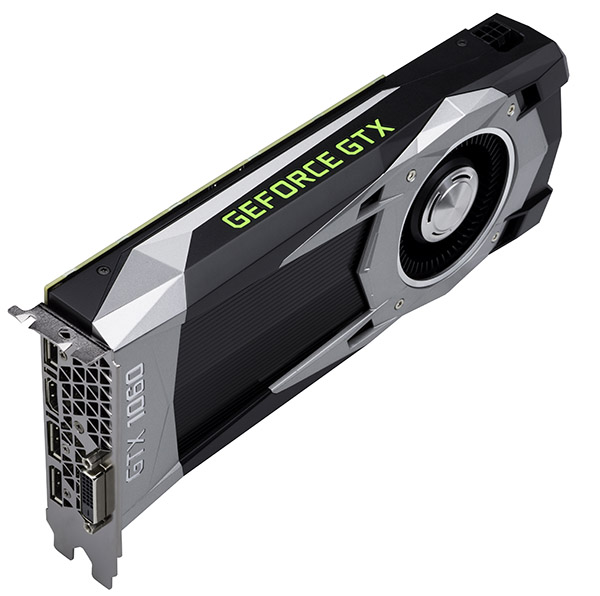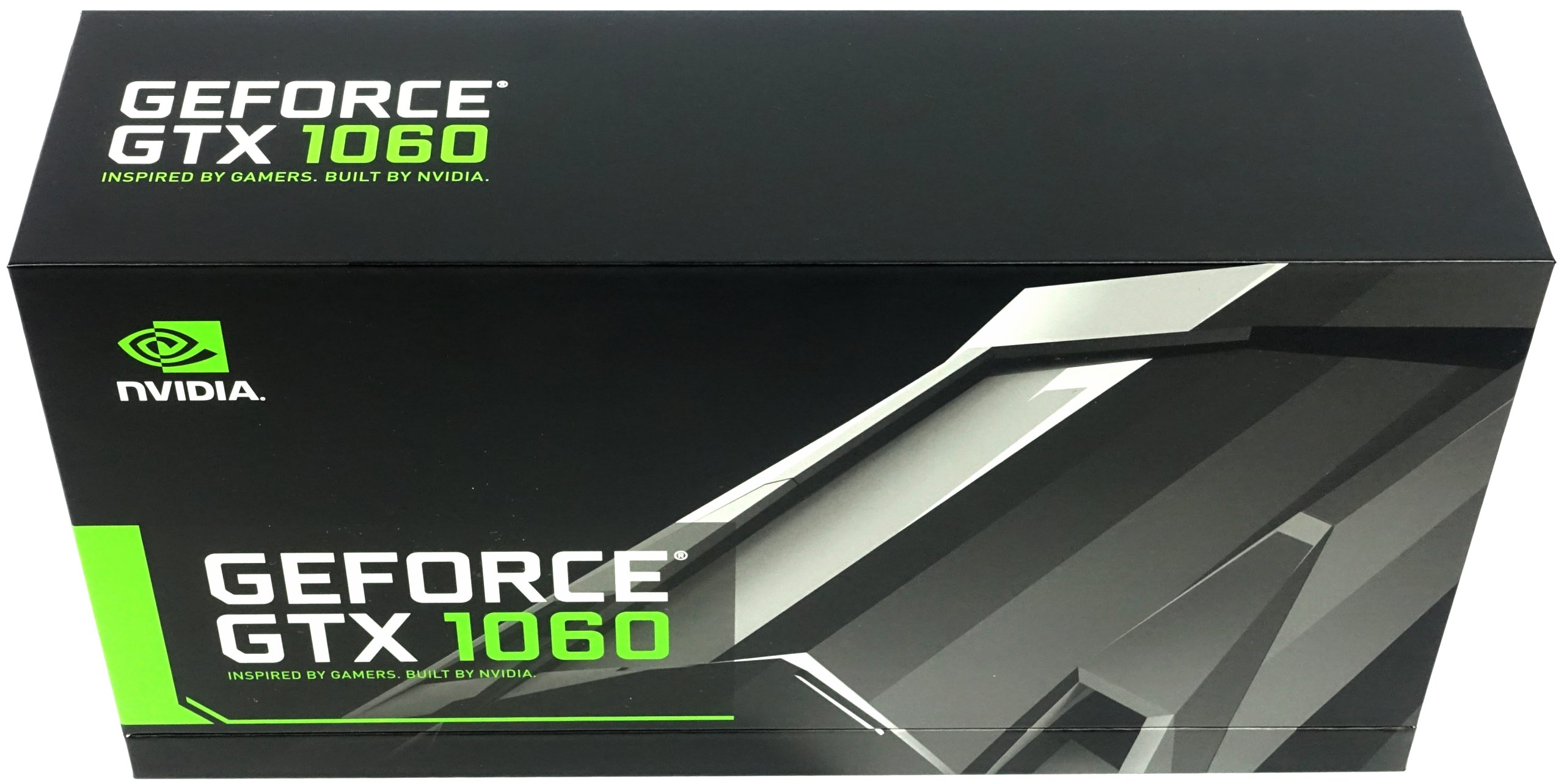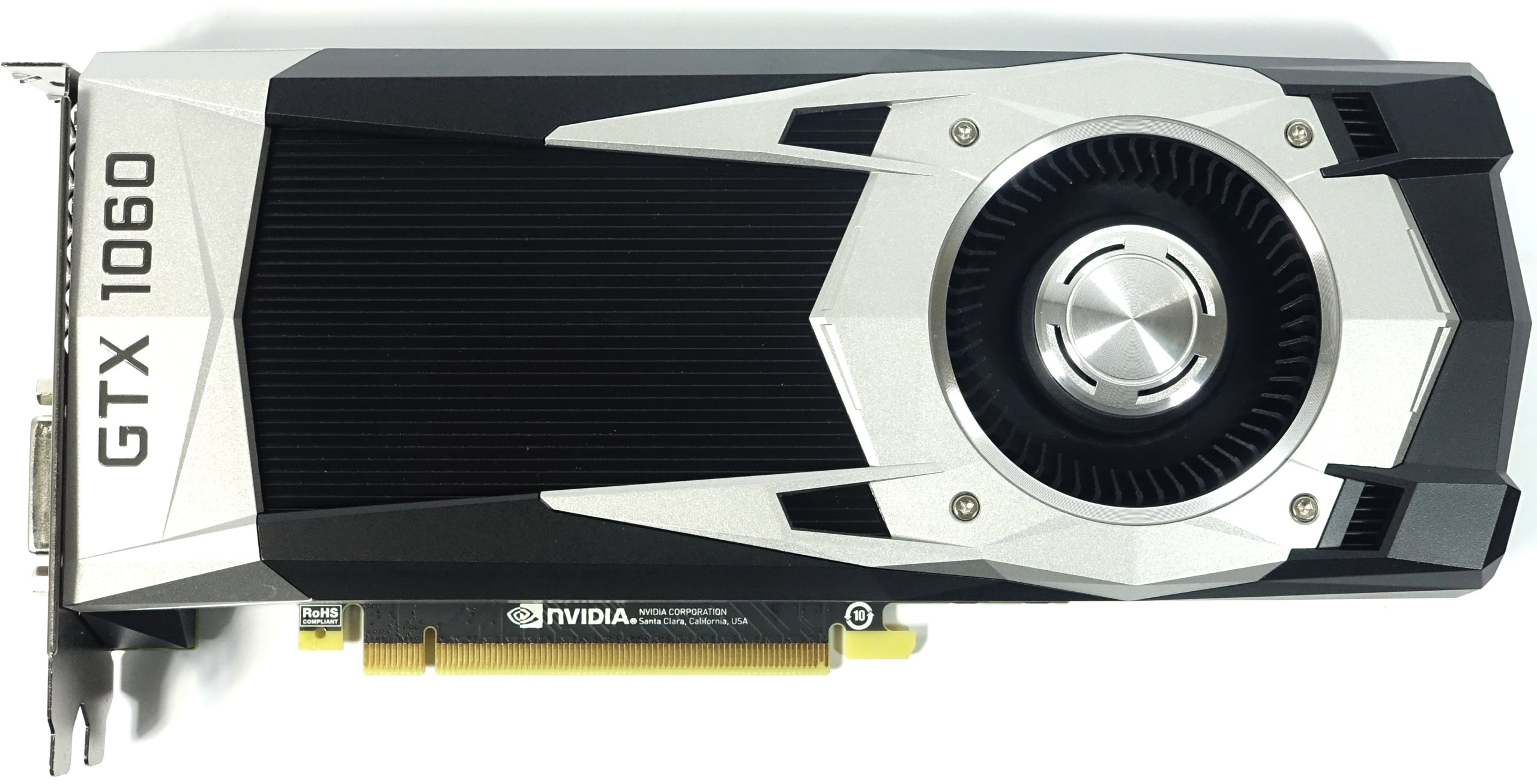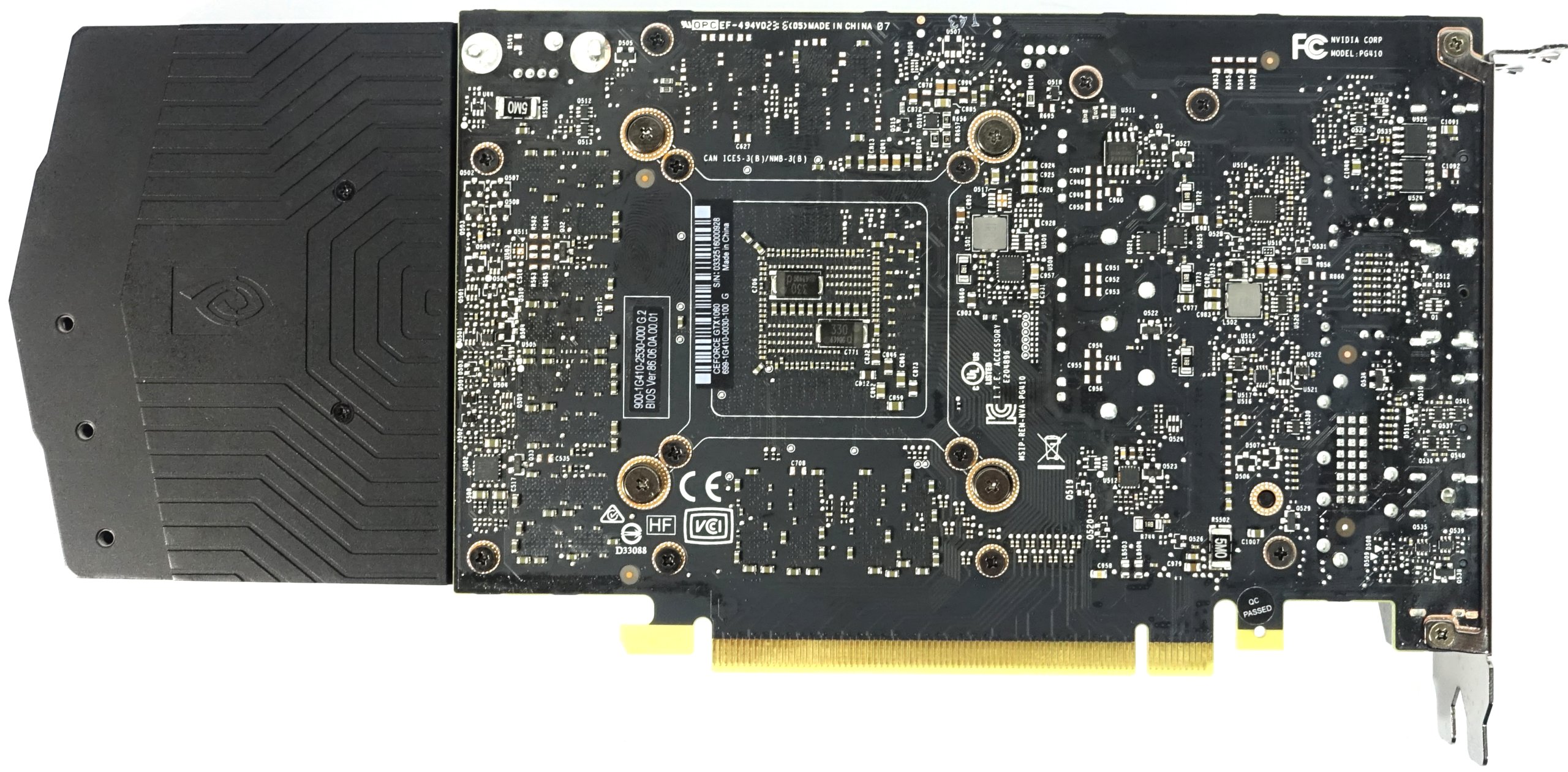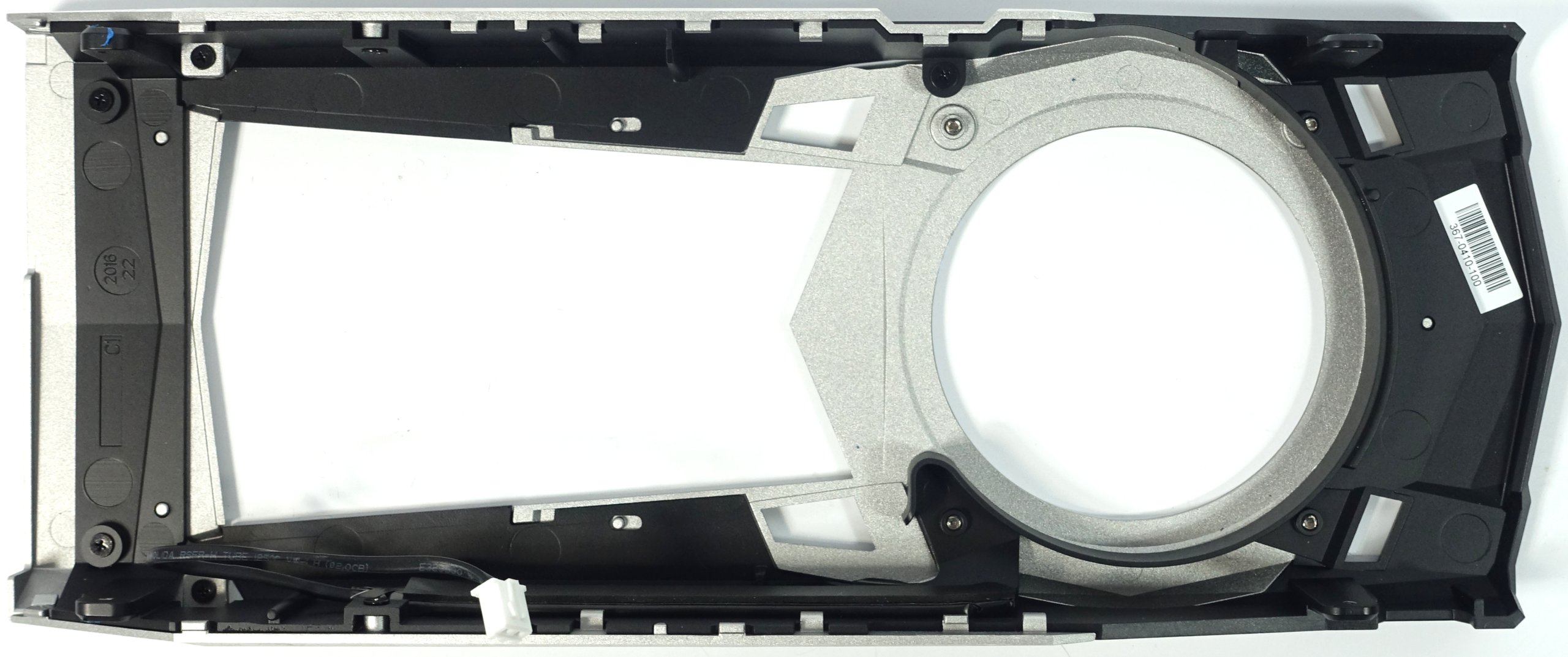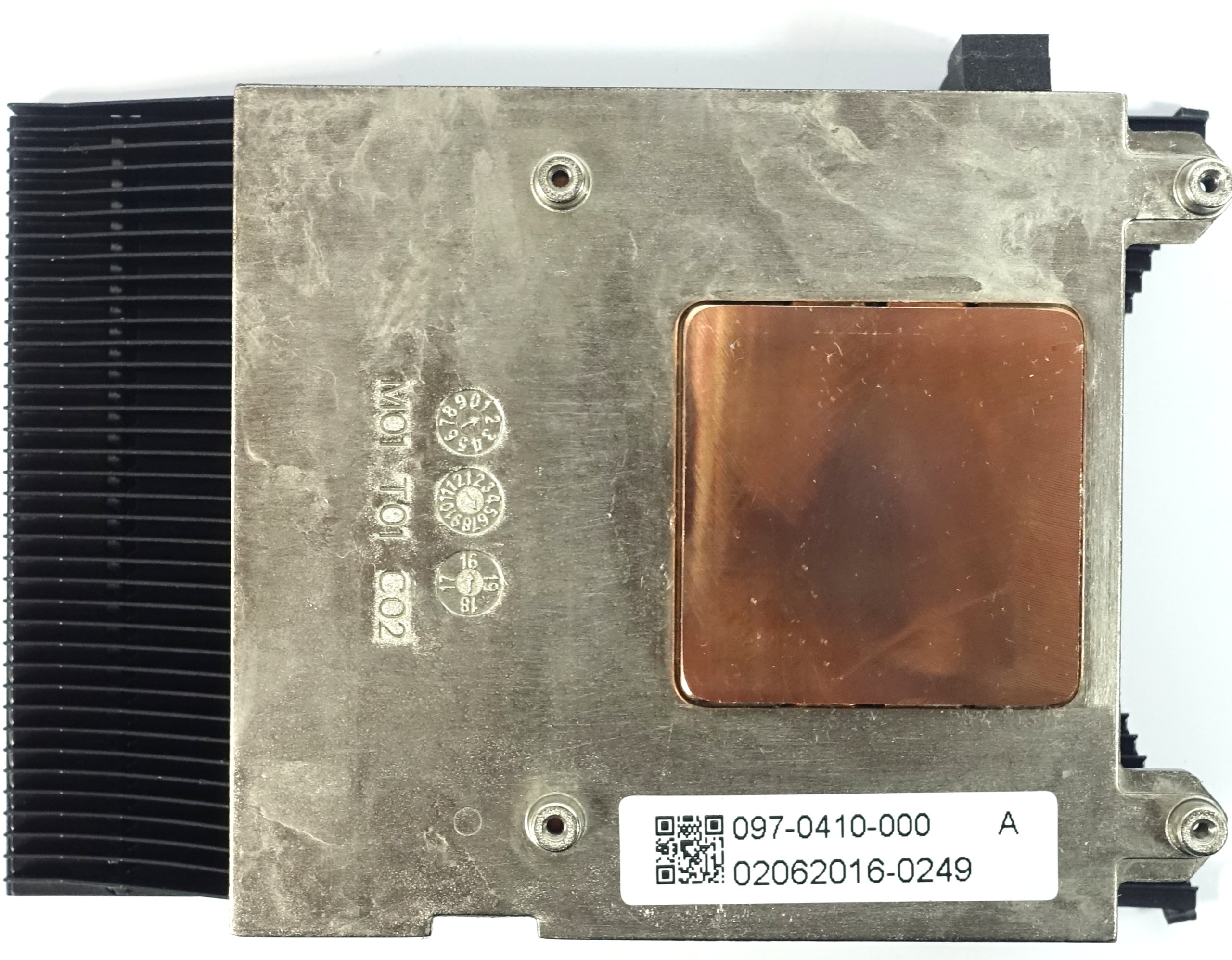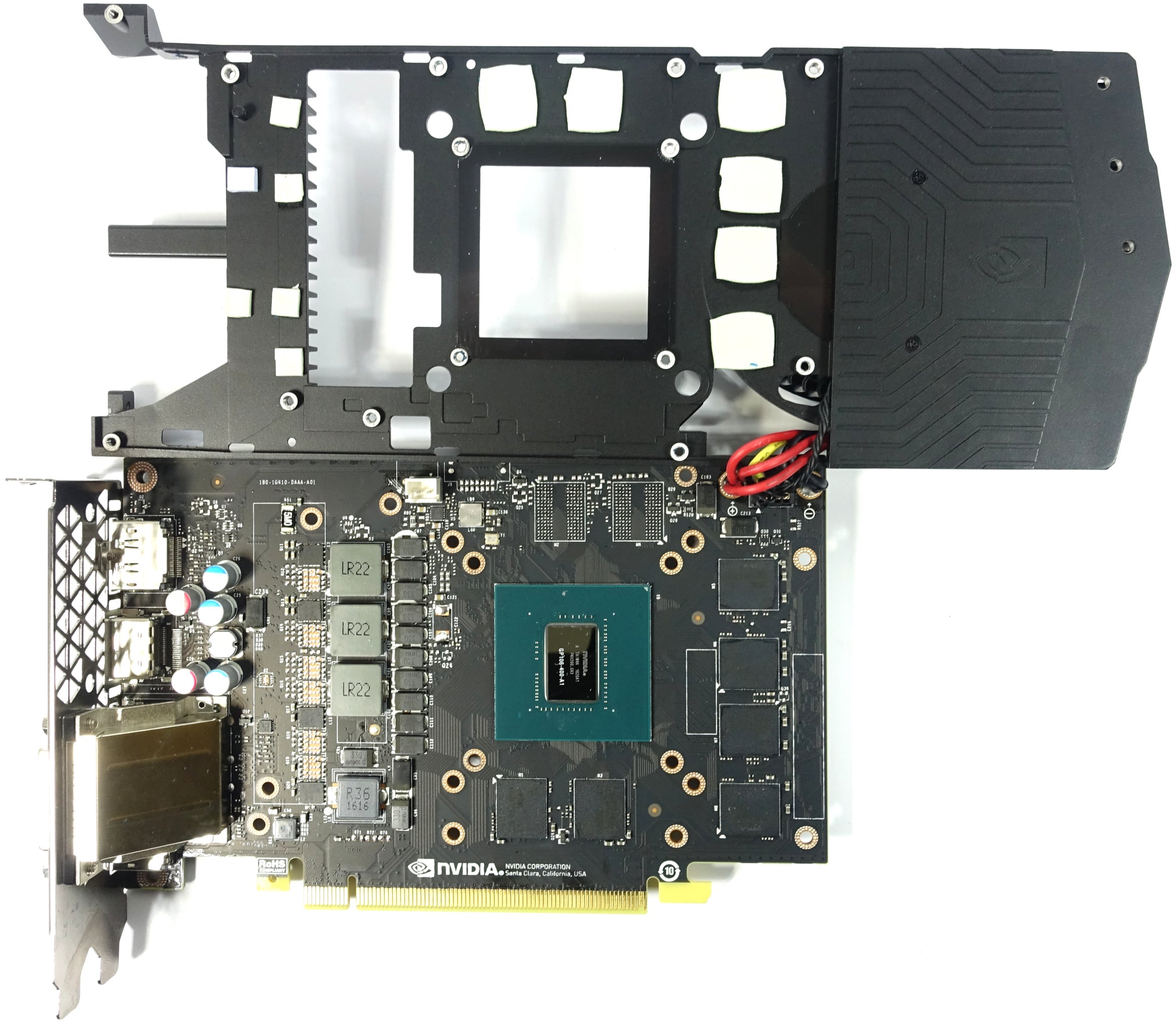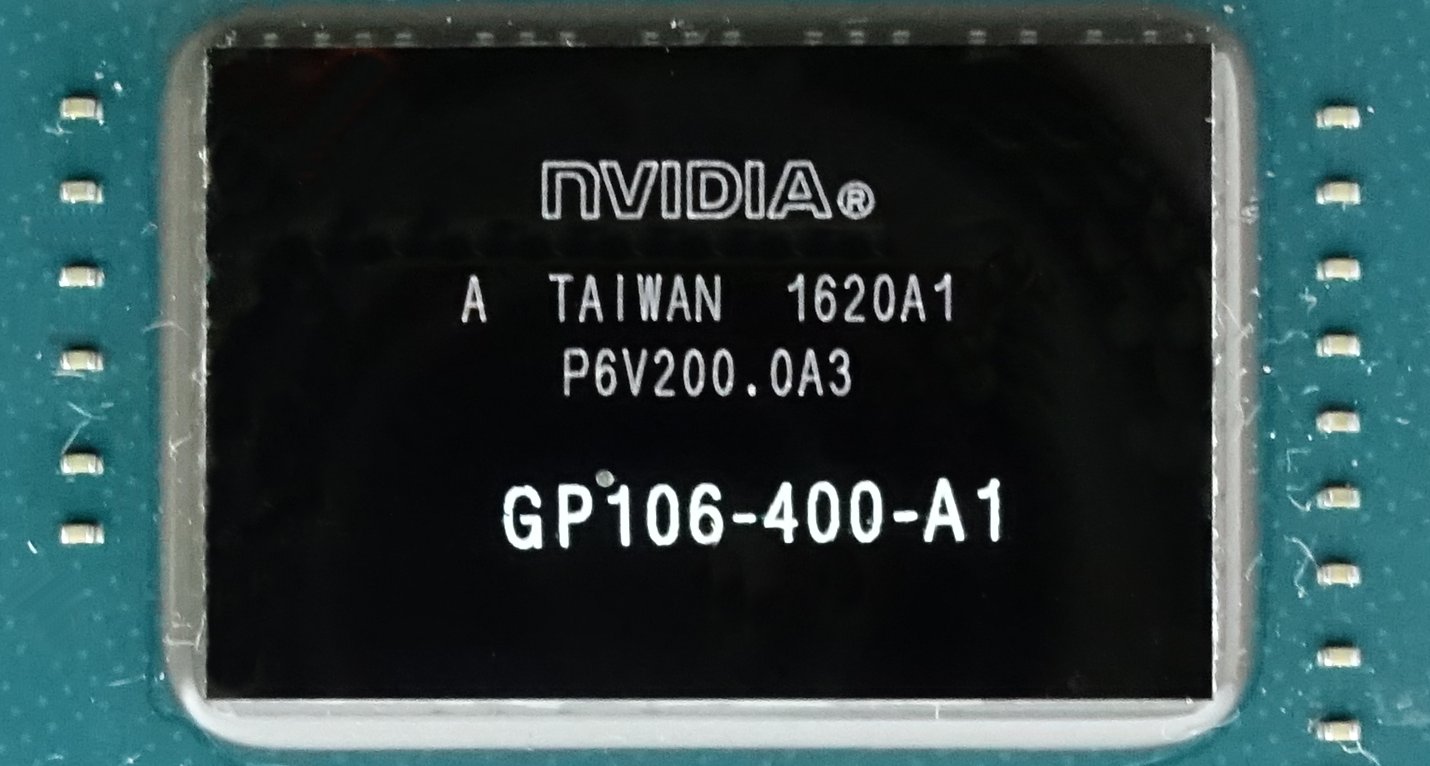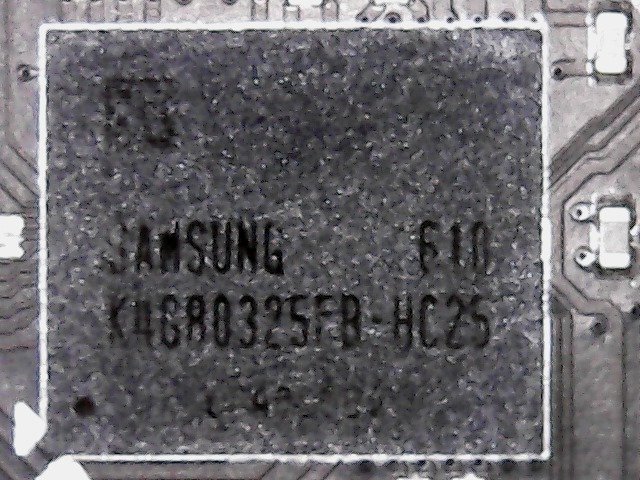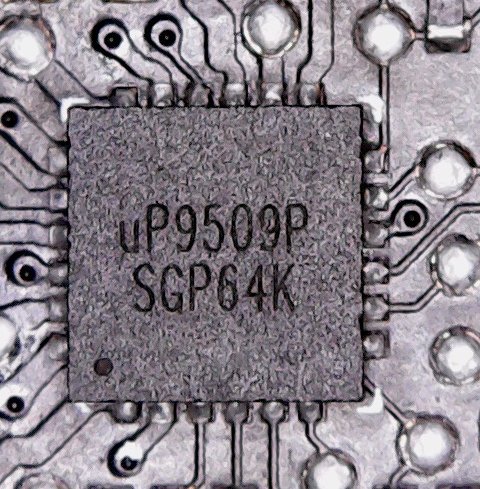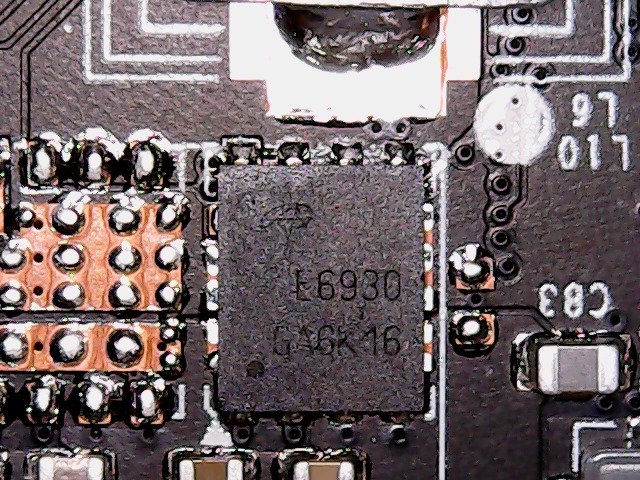Nvidia GeForce GTX 1060 6GB Review
Say Hello To A New Pascal-Based GPU
Two months after its debut, Nvidia’s Pascal architecture is slowly filling out the company’s desktop graphics card portfolio from top to bottom. First came the GeForce GTX 1080, serving up 30%+ more performance than a GeForce GTX 980 Ti for less money. Online vendors still can’t keep them in stock (Newegg doesn’t have any as of this writing). Then we were introduced to the GeForce GTX 1070, which also outperforms a 980 Ti for hundreds of dollars less.
Now we’re getting a third Pascal-based board in the GeForce GTX 1060. Announced earlier this month, we already know that Nvidia’s partners will have versions starting at $250. The Founders Edition implementation will sell for $300 on nvidia.com and in Best Buy stores, so don’t be surprised when you don’t find them elsewhere online.
GeForce GTX 1060 is based on a brand new GPU called GP106 that exposes many of the same features as GP104, but in a more mainstream package. Don’t let that term dissuade you, though. The 1060 may be a mere 120W card, but Nvidia says it’s good for GeForce GTX 980-class frame rates. Two years ago, that level of performance sold for $550. We’ve come a long way, to be sure.
Meet GP106
Nvidia builds its flagship GeForce GTX 1080 using a complete GP104 processor with four Graphics Processing Clusters enabled. This yields a card with 2560 CUDA cores and 160 texture units. The GTX 1070 centers on the same GPU with three of its GPCs turned on, adding up to 1920 cores and 120 texture units.
GeForce GTX 1060 scales down similarly using the same architectural building blocks. From our GeForce GTX 1080 launch coverage:
“Each GPC includes five Thread/Texture Processing Clusters and raster engine. Broken down further, a TPC combines one Streaming Multiprocessor and a PolyMorph engine. The SM combines 128 single-precision CUDA cores, 256KB register file capacity, 96KB of shared memory, 48KB of L1/texture cache and eight texture units. Meanwhile, the fourth-generation PolyMorph engine includes a new block of logic that sits at the end of the geometry pipeline and ahead of the raster unit for handling Nvidia’s Simultaneous Multi-Projection feature.”
| GPU | GeForce GTX 1060 (GP106) | GeForce GTX 980 (GM204) |
| SMs | 10 | 16 |
| CUDA Cores | 1280 | 2048 |
| Base Clock | 1506 MHz | 1126 MHz |
| GPU Boost Clock | 1708 MHz | 1216 MHz |
| GFLOPs (Base Clock) | 3855 | 4612 |
| Texture Units | 80 | 128 |
| Texel Fill Rate | 120.5 GT/s | 144.1 GT/s |
| Memory Data Rate | 8 Gb/s | 7 Gb/s |
| Memory Bandwidth | 192 GB/s | 224 GB/s |
| ROPs | 48 | 64 |
| L2 Cache | 1.5MB | 2MB |
| TDP | 120W | 165W |
| Transistors | 4.4 billion | 5.2 billion |
| Die Size | 200 mm² | 398 mm² |
| Process Node | 16 nm | 28 nm |
GP106 comes equipped with two GPCs, so you end up with a total of 1280 CUDA cores and 80 texture units. The chip benefits from the same optimized timings that let Nvidia crank the clock rates up on GP104, facilitating a base frequency of 1506 MHz and a typical GPU Boost rating of 1708 MHz.
Get Tom's Hardware's best news and in-depth reviews, straight to your inbox.
The processor’s back-end is trimmed down, too. Six 32-bit memory controllers provide an aggregate 192-bit data path. Like the larger GP104, each controller is associated with eight ROPs and 256KB of L2, adding up to 48 ROPs and 1.5MB of cache. Nvidia drops 6GB of 8 GT/s GDDR5 onto the board, serving up to 192 GB/s of peak throughput. Although that figure is lower than the GTX 980's 224 GB/s, remember also that Pascal employs new lossless techniques to extract savings in the memory subsystem, effectively increasing usable bandwidth. Adapted from our GTX 1080 coverage, "[GP106's] delta color compression tries to achieve 2:1 savings, and this mode is purportedly enhanced to be usable more often. There’s also a new 4:1 mode that covers cases when per-pixel differences are very small and compressible into even less space. Finally, Pascal has a new 8:1 mode that combines 4:1 constant compression to 2x2 blocks with 2:1 compression of the differences between them."
Of course, GP106 is manufactured using the same TSMC 16FF+ process as GP104. Whereas the larger GPU is composed of 7.2 billion transistors on a 314 mm² die, Nvidia packs 4.4 billion FinFET transistors into 200 mm² for GP106. The less-complex processor, coupled with less memory on a simpler PCA, results in a 120W TDP.
A First: No SLI For Upper-Mainstream
Notice the lack of an SLI connector up top? Nvidia recommends a GeForce GTX 1070 or 1080 to gamers looking for more performance than a 1060 delivers (of course), and does not support SLI on the 1060. Generationally, this is the highest-end board we can recall without the technology. Sure, the GeForce GTX 750 Ti didn't have it, but the 760 did. So too did the GeForce GTX 950.
Officially, Nvidia internalizes the decision. There aren't many gamers who pair up mainstream GPUs, and the company doesn't want to spread resources thin, so it's focusing on optimizing SLI on faster Pascal-based cards. Beyond that explanation, though, game development is going a different direction with post-processing and compute-oriented effects that aren't friendly to alternate-frame rendering. And with DirectX 12, more control is shifted to ISVs eager to get their content out as quickly as possible. That means much of the work Nvidia pours into its drivers is circumvented.
We do have one game in our suite that supports multiple GPUs through DirectX 12: Ashes of the Singularity. After adding a second GeForce GTX 1060 and clicking one checkbox, we see the following speed-up:
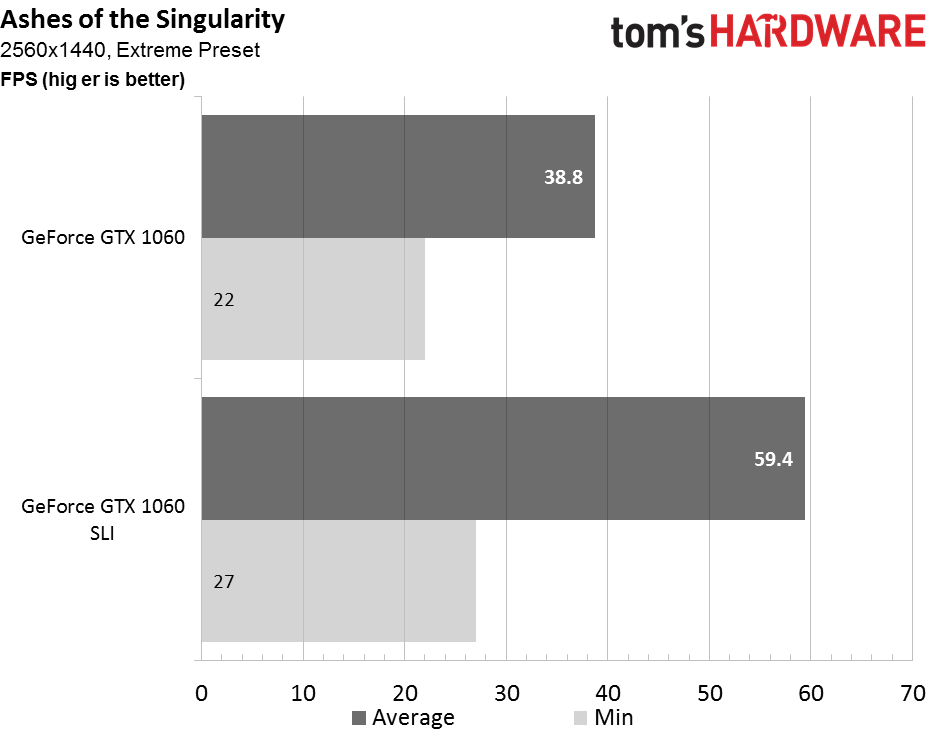
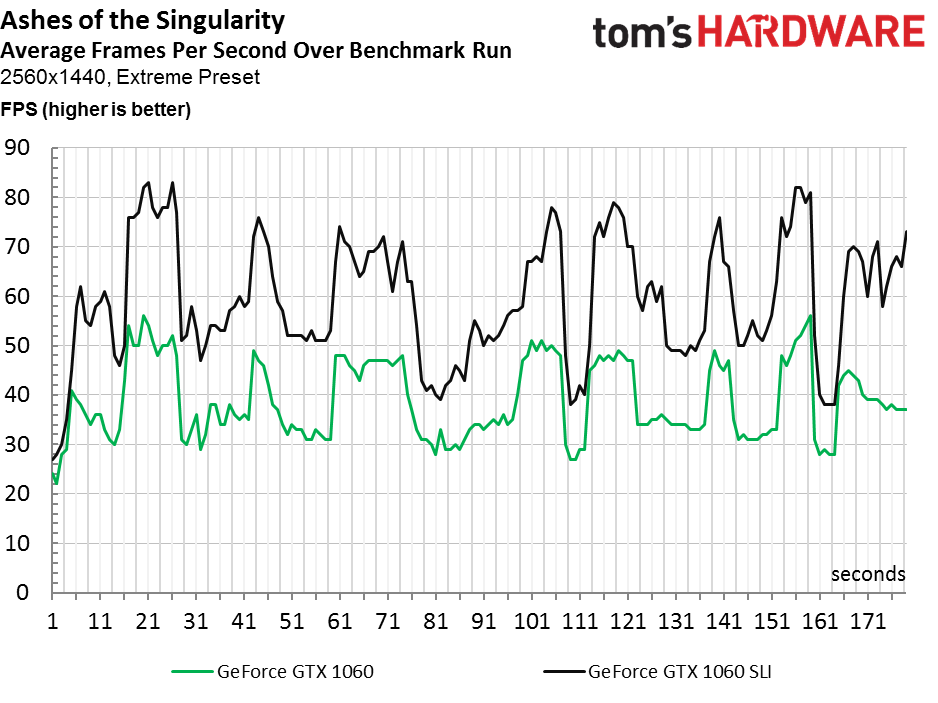
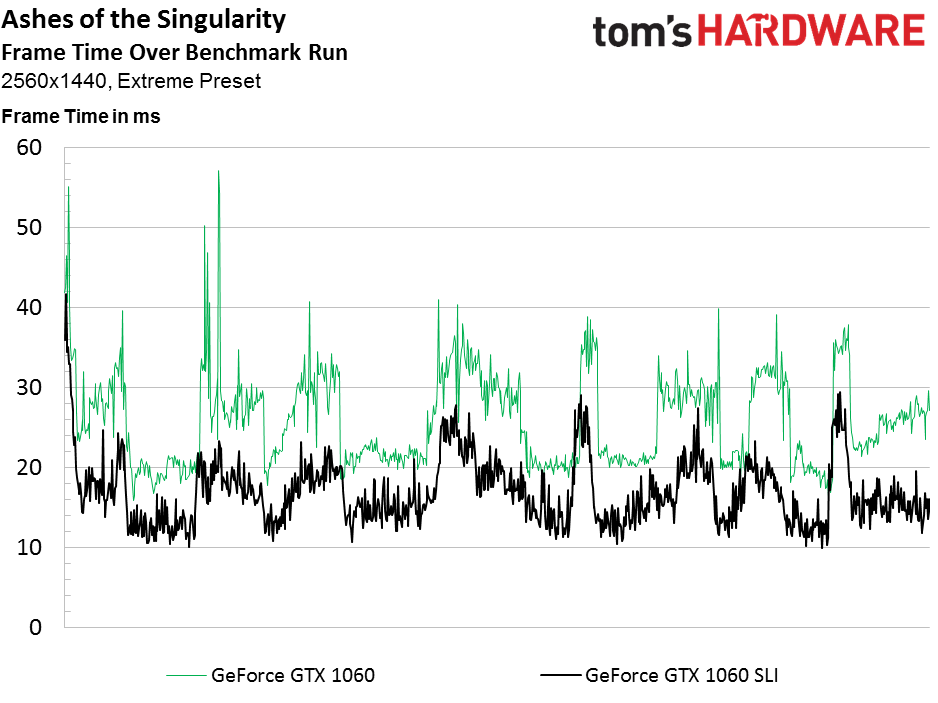
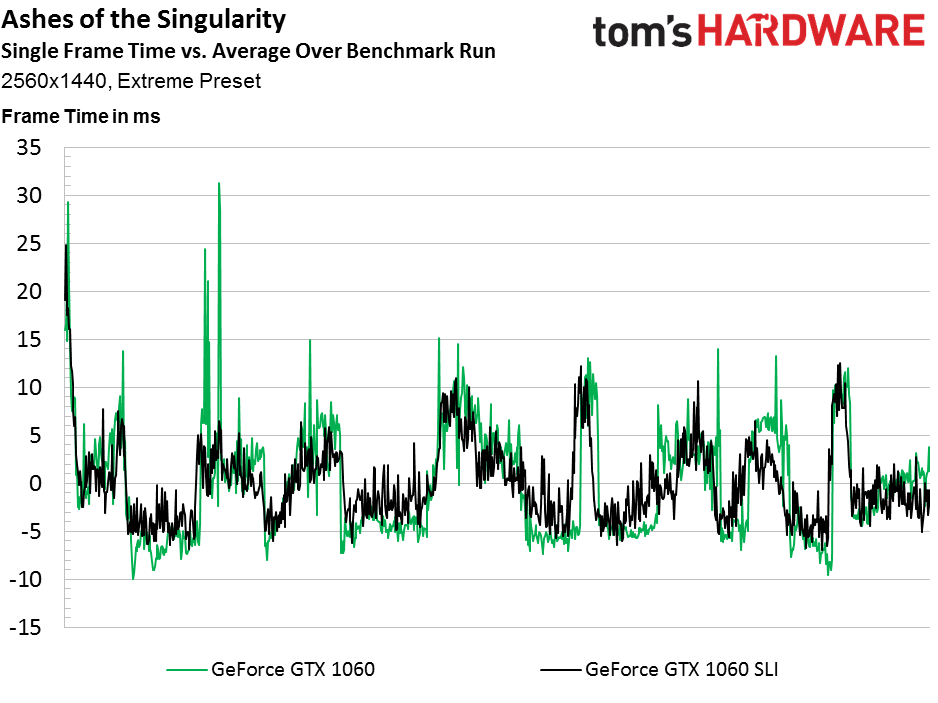
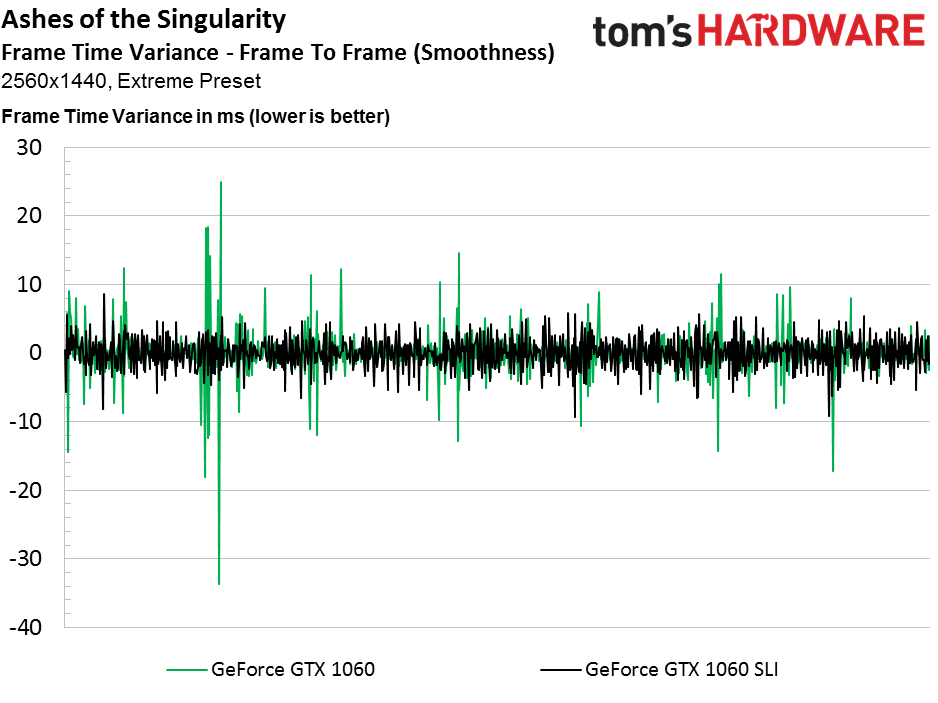
Although that's not the kind of scaling we're used to seeing from SLI, ~50% isn't bad. Unfortunately, we can't even experiment with DirectX 11 games and DX12 titles without support for multiple adapters built-in.
Given that this is a 1080p-focused card, Nvidia could retroactively enable SLI over PCI Express through a driver update, and we hope it does. Regardless of how few gamers might be interested in pairing up GTX 1060 cards, there are still plenty of DX11 titles that benefit from mutli-GPU configurations. And any problem that GP106 has cutting through DX12-imposed scaling issues applies to GP104-based cards, too. Let performance benchmarks determine how attractive SLI'ed 1060s are or are not, we say.
A Closer Look At The GeForce GTX 1060 Founders Edition
Nvidia continues with its edgier 10-series Founders Edition design, though the GTX 1060 sports a presumably less expensive implementation compared to the 1070 and 1080.
That doesn't mean the new card is small, though. It's 25.4 cm long (measured from the slot cover to end of the card), 10.7 cm tall (measured from the top of the motherboard slot to the top of the card) and 3.8 cm deep. In all actuality, the card's depth is only 3.5 cm, but its slot cover sticks out by 0.3 cm.
At 845g, the GeForce GTX 1060 Founders Edition isn’t particularly light either.
Design, Feel & Connectors
Once again, Nvidia uses a mixture of aluminum and plastic for the card’s shroud. It’s a bit simpler this time around, though. The cover, including the fan, can be removed in one piece. Up top, we find the illuminated GeForce GTX logo, along with a six-pin power connector.


The GeForce GTX 1060’s back end is a bit of a departure from previous designs. Graphics cards with short PCAs often have air intakes where the cooler protrudes beyond the board, servicing the radial fan. Instead, the 1060 has a normal cover without an opening. Undoubtedly due to cost concerns, there's also no backplate.
The back side of the card presents us with a familiar sight.
The I/O panel is copied from Nvidia's GeForce GTX 1080 and 1070 without a single change. It’s dominated by three DisplayPort connectors, which are version 1.2-compatible. However, they company tells us they're also ready for version 1.3 and 1.4 as well, matching the GPU's display controller. In addition, there’s an HDMI 2.0 connector and a dual-link DVI connector; no analog output is available.
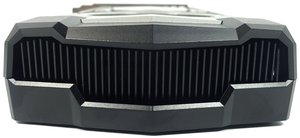
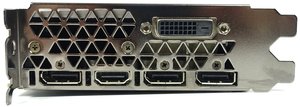
Cooler Design, Board & Power Supply
Turning our attention inward, we remove the shroud to expose the GeForce GTX 1060's cooling solution.
Up top, we immediately notice the power connector's strange position. It’s situated in a part of the cooler that protrudes beyond the actual PCA. This necessitates a number of cables to attach to the board.
The implementation is anything but elegant, and it prevents Nvidia's partners from building shorter 1060s. Although the card is only 17.5cm long, it doesn't have any space to accommodate a power connector.
Remove the four screws securing the cooler's body and it comes right off. There’s a massive copper heat sink and metal frame underneath. The closed cooling fin design reminds us of the GeForce GTX 1070, and it should provide ample performance given the 1060's 120W TDP.
The massive retention and cooling frame serves double duty by keeping everything in place and cooling the voltage regulation circuitry/memory modules.
Once the frame is unfastened and taken off, it needs to be flipped up and over. This is due to the cables connecting the separate PCIe power connector, which are permanently soldered to the board. Doing this reveals the bare PCA in all of its glory.
As usual, the GPU sits front and center. GP106 is naturally quite a bit smaller than the GP104 GPU we found on Nvidia's GeForce GTX 1080 and 1070. The differences between boards don't end there, though.
Take the memory modules as an example. Only six of the 1060's emplacements are populated with Samsung K4G80325FB-HC25 GDDR5. They have a capacity of 8Gb (32 x 256Mb) each and run anywhere from 1.305V to 1.597V, depending on clock rate. All told, this is where we get the 1060's 6GB specification.
Unfortunately, the PWM controller isn't documented. It’s made by uPI Semiconductor and bears the model number uP9509, which means that it’s probably the uP9511P’s smaller sibling (the latter controller is what we found paired to the GP104 processor).
The memory modules and one of the GPU phases get their power through the motherboard’s PCIe slot. The two remaining GPU phases and the card’s accessories draw power from the six-pin power connector. We'll take a closer look at what this means in terms of load distribution across the rails on the next page.
When it comes to voltage regulation, Nvidia uses only one Dual N-Channel MOSFET, the E6930, per phase for both the high and low side; separate gate drivers aren’t needed. This highly integrated component explains the empty spaces on the board.
The GPU’s three phases are completely sufficient, and their distribution makes more sense here than on AMD's Radeon RX 480.
Apart from the six-pin power connector, which appears to have taken a wrong turn somewhere, Nvidia's reference GeForce GTX 1060 actually looks pretty good. And given a relatively low amount of waste heat, its axial fan isn't a bad choice either.
MORE: Best Graphics Cards
MORE: Desktop GPU Performance Hierarchy Table
MORE: All Graphics Content
Current page: Say Hello To A New Pascal-Based GPU
Next Page How We Tested GeForce GTX 1060-
Vosgy Well with it's price point above the 480 and performance performance difference relatively matching the price difference seems like it will come down to what someone can afford at the time.Reply
Guess I'll recommend either from now on.
Thanks for the review guys, pleasure as always :D -
mitch074 I wonder: with Battlefield 4, why not add the Mantle-enabled rendering path? All existing tests show it to be pretty much equivalent to DX12, and future high-performance, low-latency titles are much more likely to make use of DX12, Vulkan etc. than DX11 or OpenGL...Reply
On that review, as a matter of fact, you use pretty much only DX11 games and only one DX12 title; new API paths are available in Dota2, Talos Principle and Doom 2016... Why not include them, as a reference for the future of gaming, instead of only showing off DX11 games? -
LFCavalcanti You could have included in the value discussion the question about having 2 RX480 in Crossfire vs a single 1070, sort off denying a market place in value for the 1060.Reply
I don't know what NVidia is thinking... their marketing campaign might be stronger than I understand and people will still buy the 1060, but value on it just don't make sense right now. -
BrutalPigeon Where are DX12 reviews? Hitman DX12? Time Spy? 1060 gets rekt in DX12. Nvidia biased review again, also project Cars? How is this even a benchmark, obviously gimped for Radeons.Reply -
kicsako This review is kinda strange. You use Project Cars what is known of running so bad on AMD cards, yet there are no dx/vulkan 12 titles except AOTS. We already have Doom(Vulkan), and Total War+Hitman for dx12. This review is weirdly Nvidia biased. People who buy mid lvl cards are not going to change it for at least 2-3 years. And we will see more and more dx12/vulkan titles yet you only include dx11 games with mostly Nvidia support. Never gona read tomshardware ever again.Reply -
Myrmidonas Yes indeed. I read elsewhere on DX12 benchmarks GTX 1060 does not cope well against rx480. Also, why not DOOM?Reply
Long story short, if you have Win7 and don't plan to upgrade for the next 2-3 years you have a solid reason to get a GTX 1060. The "plot changes" in favor of RX480 if you are going all forward with Win10. -
logainofhades No SLI, on a card of this caliber. Quite the disappointment. Doesn't appear that it quite met the hype. Solid card, at its price point, but still not quite what was expected.Reply -
IceMyth What I understood from this review is either get 1070 or 1080 or RX 480... the 1060 is a waste of money and time since you cant SLI so what you will get will be fixed and to get better gaming you will need to replace the whole GPU to one of the 3 top.Reply
Honestly I expected something decent but seems they released a cheap GPU for NVidia fans rather than to compete with AMD performance and prices! -
AndrewJacksonZA Thank you for the review Chris! It was a pleasure to read high-quality writing with good English - my brain really thanks you! :-)Reply
I would also like to join others in their request for:
- including 2x RX480s in Crossfire (price-wise they are comparable to a 1070,)
- a benchmark using Doom's Vulkan rendering path, and
- results from the TimeSpy benchmark please.
Thank you again for a relaxing and informative read,
Andrew -
cknobman I'd say typical Nvidia cash grab.Reply
A. Card is priced about $50 too high as review kind of indicates.
B. SLI is removed because Nvidia wants you to spend more $$$$$$$ on their higher priced cards. They dont want people trying to achieve playable 4k resolution without paying that Nvidia premium tax.
Right now if I was buying to play 1080-1440 I'd go AMD 480 all the way.
